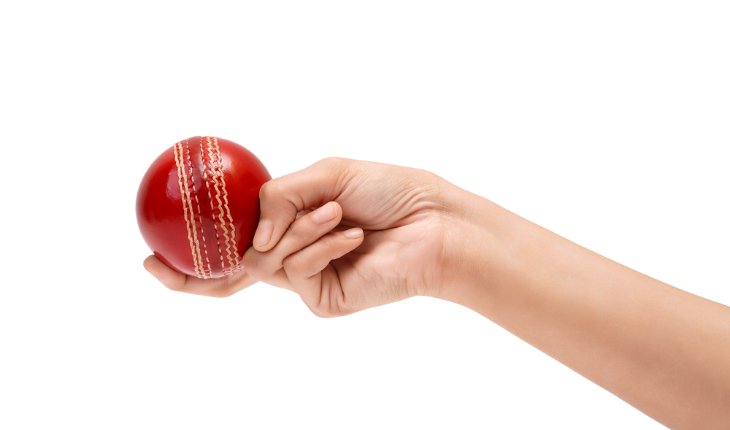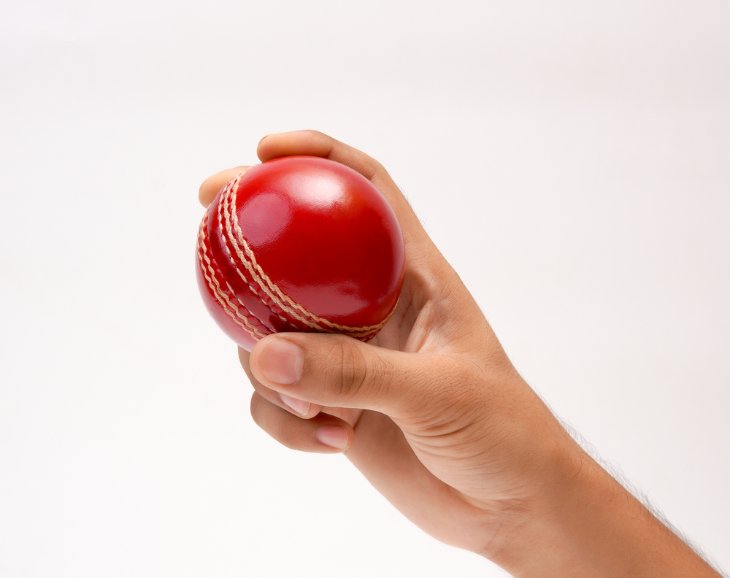Introduction
In cricket, a "googly" is a type of delivery bowled by a leg-spin bowler. It is a deceptive and tricky delivery that can often confuse batsmen. The googly is also known as a "wrong'un" or a "chinaman." The term "googly" is believed to have been coined by English cricketer Bernard Bosanquet, who introduced this delivery in the early 20th century. It adds an element of surprise to a bowler's repertoire and can be a potent weapon when used effectively. Leg-spinners often use the googly as a variation to keep batsmen guessing and to take wickets. Now, let’s check how it works:
Grip
The googly is a challenging delivery to master, as it requires a combination of skill, wrist flexibility, and control. It's a valuable weapon for leg-spin bowlers to have in their arsenal because it can surprise and dismiss even the best of batsmen when executed effectively.
- Finger Placement: The grip for a googly is similar to that of a regular leg-spin delivery but with some key differences. In a googly grip, the bowler holds the cricket ball with the index finger and middle finger close together, just as they would for a leg-spin delivery. The thumb also rests lightly on the seam.
- Seam Orientation: One of the crucial aspects of the googly grip is the orientation of the seam. Unlike a conventional leg-spin delivery where the seam is angled towards leg slip (for a right-handed bowler), in a googly, the seam is positioned differently. The seam is kept pointing towards the leg slip or leg gully, or even slightly towards the leg side. This change in seam orientation is what helps generate the opposite spin.
- Wrist Action: The primary deception of the googly comes from the bowler's wrist action. As the bowler releases the ball, they employ a flicking or twisting motion of the wrist in the opposite direction to the one used for a leg-spin delivery. This wrist action imparts a spinning motion on the ball, causing it to turn from the leg side to the off side (for a right-handed batsman).
- Alignment with Bowling Arm: The bowler needs to align their wrist, fingers, and arm correctly to execute the googly effectively. The alignment ensures that the ball comes out of the hand with the desired spin and trajectory.
- Deception: The primary aim of the googly grip and delivery is to deceive the batsman. When the batsman sees the wrist position and seam orientation, they may anticipate a leg-spin delivery that turns into them. However, due to the opposite spin generated by the wrist action and grip, the ball moves away from them, often leading to confusion and the possibility of the batsman playing the wrong shot or missing the ball altogether.
- Variations: Some bowlers may have slight variations in their googly grips to add more deception. For instance, they may slightly alter the angle of the seam or the degree of wrist twist to make it even harder for the batsman to pick the googly.

Spin
Spin is a fundamental aspect of the googly delivery in cricket. The googly is a type of delivery bowled by leg-spinners that spins in the opposite direction to a regular leg-spin delivery. Understanding how spin works in the context of the googly is crucial for both bowlers and batsmen. Here's more information about spin with regard to the googly:
- Opposite Spin: The most defining characteristic of a googly is that it spins in the opposite direction to a regular leg-spin delivery. A leg-spin delivery, bowled by a right-arm leg-spinner to a right-handed batsman, typically spins from the leg side to the off side (i.e., from right to left). In contrast, a googly spins from the off side to the leg side (i.e., from left to right). This reverse spin is what makes the googly so deceptive and tricky to pick for batsmen.
- Wrist Action: The spin on a googly is primarily generated through the bowler's wrist action. As the bowler releases the ball, they employ a wrist flick or twist that imparts the spinning motion. The wrist action is the key to creating the opposite spin, and it's what differentiates the googly from a conventional leg-spin delivery.
- Deceptive Flight and Trajectory: To be effective, a googly needs to mimic the flight and trajectory of a regular leg-spin delivery for as long as possible. Batsmen often pick up cues from the ball's flight, and if the googly's flight differs significantly, they may be able to anticipate the spin. Therefore, bowlers work on disguising the googly to make it appear like a regular leg-spin delivery until it deviates.
- Change of Length: In addition to the change in spin direction, a well-executed googly often comes out slightly shorter than a regular leg-spin delivery. This change in length can further deceive the batsman, causing them to misjudge the line and length of the ball.
- Variations: Experienced bowlers may have variations in the amount of spin they impart on the googly. Some may generate more spin than others, making it even harder for batsmen to predict the delivery's behaviour.
- Use of Seam Position: While the primary focus is on wrist action, some bowlers also use subtle variations in seam position to add to the deception. They may angle the seam slightly differently for the googly compared to their leg-spin deliveries.
- Batsman's Challenge: Batsmen face a significant challenge when dealing with a well-bowled googly. They have to pick up cues from the bowler's hand, wrist position, and seam orientation to anticipate the type of delivery. However, even the best batsmen can struggle to read the googly, making it a potent weapon in the hands of skilled leg-spin bowlers.
Wrist Action
Wrist action is the key to the googly's success. It allows bowlers to deceive batsmen by creating a spinning delivery that behaves in the opposite direction to what the batsman expects. Achieving the right wrist action and maintaining it under pressure is a hallmark of skilled leg-spin bowlers in cricket. Let’s take a detailed look:
- Opposite Spin: The primary purpose of wrist action in bowling a googly is to create the opposite spin compared to a conventional leg-spin delivery. In a leg-spin delivery, the bowler's wrist action imparts a spinning motion that causes the ball to turn from the leg side to the off side (for a right-handed batsman). To bowl a googly, the bowler needs to reverse this spin direction, making the ball turn from the off side to the leg side.
- Wrist Flick or Twist: To achieve this reverse spin, the bowler employs a specific wrist flick or twist during the delivery motion. As the ball is released from the hand, the bowler quickly flicks or twists their wrist in the opposite direction to their normal leg-spin action. This action causes the seam of the ball to point in the desired direction for the googly, creating the opposite spin.
- Deceptive Element: The wrist action in the googly is what makes it so deceptive. Batsmen often pick up cues from the bowler's wrist position to anticipate the type of delivery. When a bowler disguises the googly well and maintains a wrist position similar to that of a leg-spin delivery until the last moment, it becomes incredibly challenging for the batsman to read the ball's behaviour.
- Control and Consistency: Bowling a googly with the right wrist action requires a high level of control and consistency. Bowlers need to ensure that they can consistently flick or twist their wrist in the desired manner while maintaining other aspects of their bowling action, such as speed and line. This level of control can take significant practice to develop.
- Variations: Experienced bowlers may have variations in their wrist action while bowling the googly. Some may use a more subtle wrist flick, while others may employ a more pronounced twist. These variations can make it even more challenging for batsmen to predict the googly's behaviour.
- Mastery of Craft: The wrist action in the googly is often the result of years of practice and refinement. Bowlers work tirelessly to perfect their wrist control to ensure that they can consistently generate the reverse spin that characterizes the googly.
Deception
Deception is a fundamental aspect of the googly in cricket. It's the art of tricking the batsman into misjudging the trajectory, line, or length of the delivery. The googly relies heavily on deception to be effective. Here's more about deception in the context of the googly:
- Disguised Intent: The key to deception in the googly lies in disguising the bowler's intent. Batsmen often pick up cues from the bowler's hand position, wrist action, and body language to anticipate the type of delivery. In the case of the googly, the bowler wants to hide the fact that they are about to bowl a delivery that spins in the opposite direction to their regular leg-spin deliveries.
- Maintaining the Facade: Bowlers work on maintaining the appearance of a leg-spin delivery for as long as possible during their run-up and delivery stride. This means that until the very last moment, the bowler's action should resemble that of a regular leg-spin delivery. The wrist position, seam orientation, and body posture should all mimic the leg-spin action to prevent the batsman from detecting the googly early.
- Late Wrist Action: The wrist action, as discussed earlier, is crucial for the googly's deception. The bowler employs a quick flick or twist of the wrist in the opposite direction just before releasing the ball. This late wrist action ensures that the seam orientation and spin direction change abruptly, making it difficult for the batsman to adjust their shot.
- Reading the Batsman: Deception also involves reading the batsman's behaviour and intent. Skilled bowlers pay attention to how the batsman reacts to their deliveries. If a batsman is picking the googly easily, the bowler might need to improve their deception by further disguising the delivery.
- Mind Games: Part of deception is playing mind games with the batsman. The bowler wants the batsman to second-guess themselves, doubt their shot selection, or misjudge the length of the delivery. This can lead to the batsman making mistakes and ultimately getting dismissed.
- Variations: Deception can also involve variations in the googly's flight, speed, or length. Mixing up these elements can further confuse the batsman and make it challenging for them to read the delivery.
- Psychological Impact: The success of the googly isn't just about taking wickets; it's also about creating doubt and uncertainty in the batsman's mind. If a batsman is unsure about how to play a particular bowler's googly, it can affect their overall performance and decision-making at the crease.
Deception in the googly is about creating an illusion of a regular leg-spin delivery while secretly delivering a ball with reverse spin. This deception is achieved through a combination of disguising the bowler's intent, late wrist action, and variations in flight and length. When executed effectively, the googly can leave batsmen bewildered and lead to their dismissal.
Summary
Deception is at the heart of the googly in cricket, a delivery bowled by leg-spinners. It involves concealing the bowler's intent to spin the ball in the opposite direction of a regular leg-spin delivery. This is achieved through maintaining the appearance of a leg-spin action, disguising wrist movement until the last moment, and reading the batsman's reactions. Successful googly bowlers use late wrist action, variations in flight and length, and psychological mind games to confuse batsmen, making it challenging for them to predict the ball's behaviour. The ultimate goal is to trick the batsman into making mistakes and getting dismissed.
For more information:
- How Does Cricket Scoring Work
- What is Powerplay In Cricket?
- The Role and Importance of Spin Bowling in English Conditions
- UK’s Most Historic Cricket Matches


